Cruciate Ligament Injuries in Dogs
CRUCIATE LIGAMENT INJURIES IN DOGS
The Cruciate ligaments are the most commonly injured ligaments in dogs, as they take a great deal of strain on a day to day basis. With modern dogs being either overweight, or bred to be extremely active, the ligaments can snap, resulting in a lameness that comes on suddenly and doesn’t go away on its own.
WHAT ARE THE CRUCIATE LIGAMENTS ?
The cruciate ligaments are found in the hind legs of dogs, cats and people. They are two ligaments that cross over, in an x shape, inside the knee or stifle joint. They lie between the underside of the femur (thigh bone) and the top of the tibia (calf bone). There are two per joint. The one lies in the front of the joint (cranial cruciate ligament), and the other at the back of the joint (caudal cruciate ligament.) As the leg flexes and extends as the dog is running or walking, the one will tense and the other relax. In this way they prevent the bottom bone wobbling as opposed to the top bone and stabilize the whole joint when weight is placed on the leg.
WHEN DO THESE LIGAMENTS GET INJURED?
There are two distinct groups of dogs that tend to tear or injure their cruciate ligaments. The first group is the large, very active, well muscled breeds such as Boxer Dogs and Staffordshire Bull Terriers. These extremely active dogs put a lot of strain on their cruciate ligaments as they charge up and down in their yards and can tear them fully or partially tear them (often seen in Staffies), leading to a sudden onset of lameness on the hind leg.
The second group is middle aged, overweight small to medium breed dogs, such as terriers, Shelties and Maltese Poodles. Years of stretching and overwork of these ligaments in overweight dogs, very often from putting their knees through a lot of strain by jumping on and off of furniture at home and not doing a lot of other exercise, weakens the ligaments over time until one day, they tear.
WHAT ARE THE SIGNS OF AN INJURED OR TORN CRUCIATE LIGAMENT?
- Sudden onset of lameness of the back leg
- The dog puts very little weight on the leg
- It goes on for more than a week
- It seems to get better and worse but never 100% better
- Owners press the leg all over and can’t find pain easily
- Sometimes the knee joint is sore when flexed by a veterinarian
- Veterinarian picks up a “drawer” sign
- If both cruciate ligaments tear at the same time, the dog may appear to be paralyzed in the back legs.
- If left unattended, the joint gets thick and develops a ball of bone on the inside – this is arthritis from the body trying to stabilize the joint
- If left unattended, the dog will show lameness on and off for 6 months to a year and will eventually walk on the leg, but with a damaged, arthritic joint.
DIAGNOSIS OF A TORN CRUCIATE LIGAMENT
Your vet will examine your dog and lie your dog on it’s side. He/she will then flex and extend the knee joint to check for pain, excessive movement and arthritis or sandy feeling joints. He/she will then try to move the tibia back and forth as opposed to the femur. If the cruciates are intact, this will not happen, but if they are torn or partially torn, the bottom bone can move back and forth, which is abnormal. This is known as the “drawer sign.”
Your vet should recommend X rays (radiographs) of the leg. With these X rays, your vet will check for arthritic changes in the joints, increased joint space from accumulation of fluid and measure the angle of the femur as it sits on the top of the tibia. These will all help to determine if your dog needs surgery, and which type of surgery is best for your pet.
SURGERY TO REPAIR THE CRUCIATE LIGAMENTS
WHEN DOES MY PET NEED SURGERY?
- If your pet is a large breed dog, surgery is recommended
- If there is a full tear of the ligaments with noticeable instability in any size of dog
- The dog shows very little improvement on anti inflammatories and/or rest. It isn’t recommended to wait too long (more than a month) before deciding on surgery as arthritis may develop from the instability in the joint
- Dogs with ruptured cruciates together with torn menisci (cartilage inside the joint)/luxating patellas (kneecaps that jump on and off either from trauma or genetic in smaller breed dogs)
WHICH PETS ARE NOT CANDIDATES FOR SURGERY?
- Dogs in which there is a large amount of arthritis already inside the joint – as the aim of surgery is to prevent arthritis forming, there would be little point to doing this
WHAT TYPE OF SURGERY IS BEST FOR MY PET?
There are dozens of ways that cruciate ligaments have been repaired over the past couple of decades. Some work well, some don’t and some suit different sizes of pets better than others.
FASCIA LATA STRIP
Very popular in the eighties and nineties and one of the easier types of surgeries to do, a strip of muscle sheath (connective tissue) is taken from the side of the thigh, and brought down to the level of the knee joint. It is then either wrapped around or through the joint to stabilize it.
Upsides and Downsides
- It is quick, easy and cheap and can be performed by a general veterinarian
- There is no reaction to foreign material placed in the body (such as nylon, wire, or multifilament suture material)
- A strip of fascia from the outside of the thigh can never have the same strength as a cruciate ligament and if used, should only be used in very small pets. If used in medium to large breed dogs, especially if overweight, it simply doesn’t work very well.
- The joint should always be opened to check for meniscial tears and pieces removed, regardless of whether the joint is stabilized internally or externally.
NYLON, WIRE OR MULTIFILAMENT SUTURE
Nylon or multiflament suture material is placed behind the fabellae (small bones behind the knee joint on the femur) and tied down through a hole drilled into the top of the tibia. Wire is not as popular anymore as the newer implant materials available are superior.
Upsides and Downsides
- Not every vet has the facilities to do this type of surgery
- Foreign implants, especially multifilament suture material (multiple small pieces of thread woven together – very strong) have the potential to cause a reaction and if contamination of the wound has occurred, an infection can result
- Not suitable for dogs that are very large, fat and/or very active
- Can be used only if the joint is at a healthy, normal angle for the implant to work. Angles should be measured on X rays before undertaking this type of surgery only to find that the implant breaks because the joint lies at such an angle that excessive forces are operating on the implant.
TIBIAL TUBEROSITY ADVANCEMENT (TTA) AND TIBIAL PLATEAU LEVELLING (TPLO)
Both the TPLO and TTA create stability within the dog stifle by altering the angle of the knee and using implants to hold the knee in place while the joint heals in its new position. (1) If the angle of the joint is very upright, the whole joint is changed by either surgically levelling the top of the tibia (top flat part) or moving the front of the tibia even further forward using plates and screws thereby making a joint that has far fewer stresses within the joint. The TTA is surgically less invasive than the TPLO. The amount of stifle angle shifting that takes place during a TTA is minimal when compared to that of a TPLO, where the tibia (the weight bearing part of the knee joint) is surgically cut and altered. In the TTA the osteotomy is made into the tibial tuberosity (not a weight bearing part of the knee joint), not the tibial plateau itself, giving dogs a greater ease in healing,recovery and overall success of the procedure.Ultimately the risk of complications is related to the surgeon performing the procedure, with the rates of complications for TTA being low, due to the simplicity of the surgery, whereas rates of complications from TPLO are higher because of the amount of skill required to perform such an invasive procedure – catastrophic failure can occur when an unskilled veterinarian performs a TPLO. (1)
Upsides and Downsides
- Specialist work with plates and screws – ordinary vets cannot do this
- Expensive – a couple of thousand is normal in any currency
- Dogs recover quickly and do well with this type of surgery
- Can be used for all sizes of dogs and cats with very good results
- Best for very large, active dogs with upright joint angles
- Any implant has the potential to cause a reaction or to fail although this is far less likely with this procedure than with the above mentioned procedures.
REFERENCES
1.http://dogkneeinjury.com/tplo-vs-tta-for-cranial-cruciate-ligament-repair/

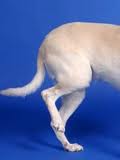
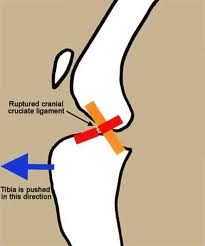
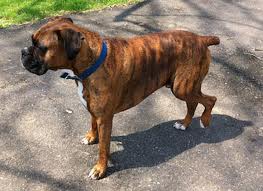

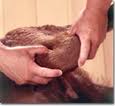
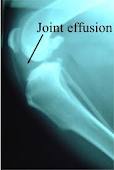

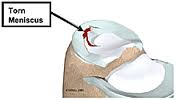
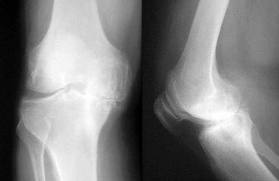
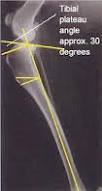

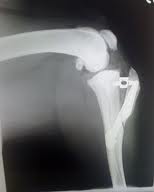
Leave a Reply
You must be logged in to post a comment.